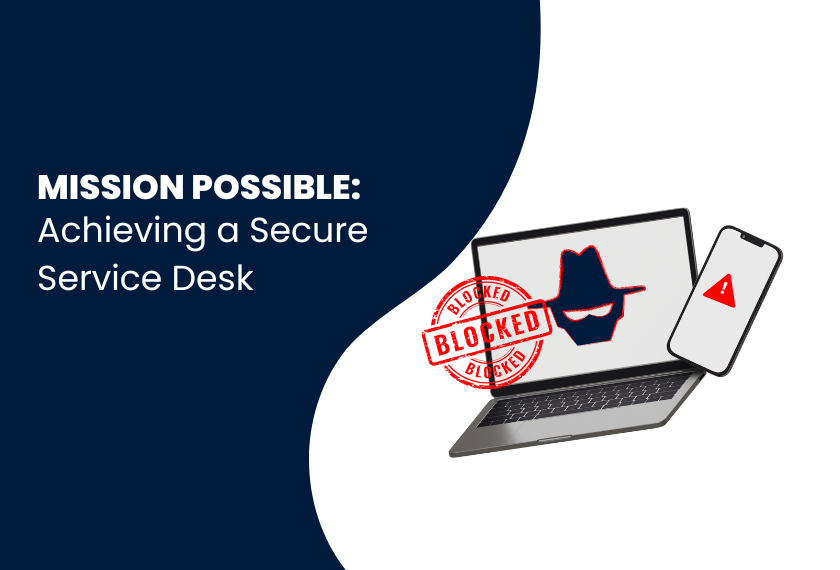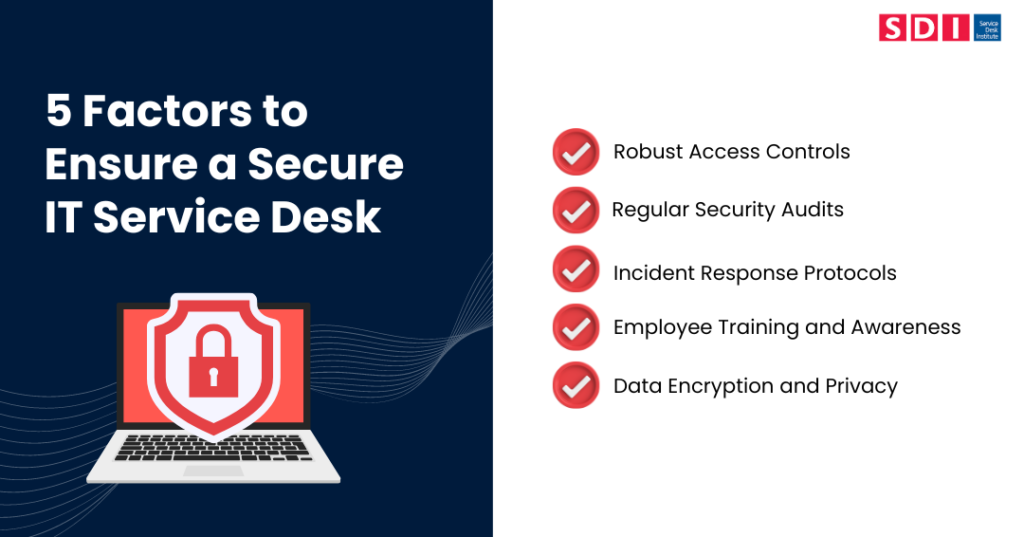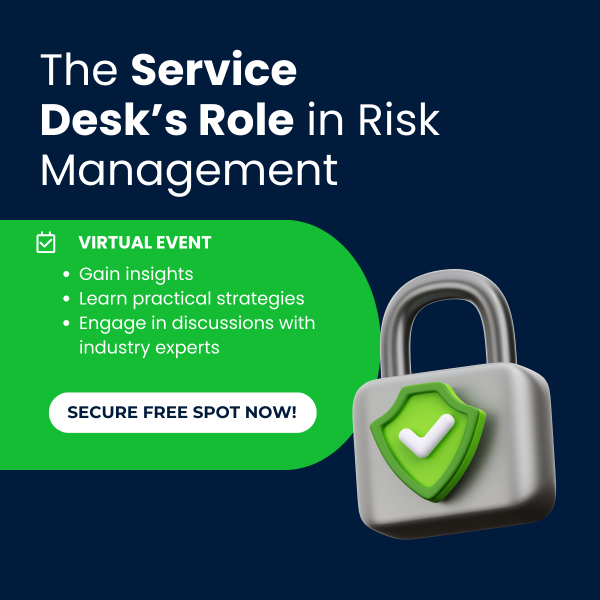
Cybersecurity attacks are on the rise! With the rising adoption of new technology in all areas of business, the risks linked to IT service operations have grown considerably. And many companies feel unprepared to deal with these risks.
Incidents, outages, security breaches, and other disruptions can have severe consequences, impacting productivity, customer trust, and overall business performance.
And even if you have a solid security plan, you should stay alert and avoid getting too comfortable. Cybersecurity awareness should be a daily practice.
This blog discusses the potential risks in the IT service desk and how to ensure its security.
How To Discover the Possible Weaknesses in Your IT Service Desk
The service desk plays a crucial role in bridging the gap between IT and IT service users. So, having a secure service desk is vital in keeping an IT infrastructure strong.
But unfortunately, it is not entirely immune to potential risks.
Service desk risks encompass a wide range of areas, including cybersecurity risks, employee risks, governance risks, compliance risks, incident risks, and more. There are various factors, both internal and external, that can create weak points.
Being aware of these weak points can help ensure the smooth operation and security of the service desk. And that can ultimately benefit both users and the organisation.
Here are some of the potential weak points you should be aware of.
Threats from Inside the Organisation
“IBM study found that human error is responsible for 95% of cyber security breaches. This means that mistakes made by people cause 19 out of every 20 cyberattacks.”
Insufficient Access Controls
Weak or improperly managed access controls can lead to unauthorised access to sensitive information, making implementing robust access management protocols crucial.
Lack of Employee Awareness
Much research has shown that humans are often the weakest link when it comes to cybersecurity breaches. There are two main types of human errors in cybersecurity: skill-based and decision-based.
Skill-based errors are small mistakes during routine tasks due to lack of attention, tiredness, or distraction. Decision-based errors happen when a user makes an incorrect judgement call. In both cases, those mistakes can increase opportunities for security breaches.
Some of the most common human errors include the following:
- Weak passwords
- Unpatched software
- Lack of training
- Failing to follow company and security policies
📘 READ MORE: The Security Challenges of Hybrid Working
Inadequate Incident Response
Incident risks at the service desk relate to the timely and effective management of incidents, including those impacting IT services, customer support, and business operations.
Failure to manage incidents efficiently can result in extended downtime, reduced productivity, and negative impacts on customer satisfaction. Ineffective or slow incident response can worsen security incidents. So, having a well-defined incident response plan is essential to minimise the effects of security breaches.
Threats from Outside the Organisation
“According to IBM, it takes a company 197 days to discover the breach and up to 69 days to contain it.”
Cybersecurity risks
Cybersecurity risks are a significant concern for service desks. They can result in data breaches, unauthorised access, malware infections, and other security incidents that compromise the confidentiality, integrity, and availability of IT services and data.
To prevent such attacks, cybersecurity measures must be in place.
Phishing and Social Engineering
Social engineering and phishing attacks are on the rise and a major threat to the IT service desk. Attackers may manipulate employees through social engineering tactics to divulge sensitive information or gain unauthorised data access.
Based on some studies, phishing attempts were the most common form of attack (89%) in 2022.
Governance risks
Governance risks at the service desk relate to the lack of proper controls, policies, and procedures, non-compliance with regulatory requirements, and inadequate oversight. And that can result in financial, legal, and reputational risks for organisations.
Five Most Important Factors to Ensure a Secure Service Desk

A secure service desk is the backbone of a resilient IT infrastructure, protecting sensitive data, maintaining customer trust, and mitigating potential risks.
To fortify your service desk and ensure its security, consider these five crucial factors:
⛔ #1 Robust access controls. Implementing strict access controls is paramount in safeguarding your service desk. Enforce multi-factor authentication (MFA) and role-based access to limit unauthorised personnel from accessing sensitive information. This helps prevent data breaches and unauthorised system changes.
🔍 #2 Regular security audits. Conduct periodic security audits to identify vulnerabilities and weaknesses in your service desk environment. Vulnerability scanning and penetration testing can reveal potential entry points for cyber threats, enabling proactive measures to bolster security.
✅ #3 Incident response protocols. A well-defined incident response plan is essential to handle security breaches effectively. Establish clear incident categorisation, prioritisation, and escalation procedures to respond promptly to security incidents and minimise their impact.
🛠️ #4 Employee training and awareness. Equip your service desk team with regular training on cybersecurity best practices. Enhance their awareness of evolving threats and educate them on recognising and reporting potential security risks. Informed employees are your first line of defence against cyber threats.
🔢 #5 Data encryption and privacy. Ensure that all sensitive data, including customer information and communication, is encrypted in transit and at rest. Compliance with data privacy regulations enhances the security of your service desk and fosters customer trust.
Final thoughts
A secure service desk is crucial for protecting sensitive data, maintaining customer trust, and preventing unauthorised access. However, it’s important to note that service desk risks may vary depending on the organisation’s industry, size, and specific circumstances.
So, organisations should conduct thorough risk assessments and tailor their risk management approaches to their unique needs and requirements.
And with the proper training, service desk personnel can act as the first line of defence against potential security breaches. Their expertise can help prevent security incidents and ensure the users’ data and information remain safe and secure.
If you’d like to learn more about risk management join us for this FREE event ‘The Service Desk’s Role in Risk’. Engage in discussions with industry experts and learn how to effectively manage risks related to employees, security, and governance!
We’ll provide valuable insights and strategies that you can use to make your workplace safer and more secure.

Antonija Bozickovic
Content Creator at SDI





























